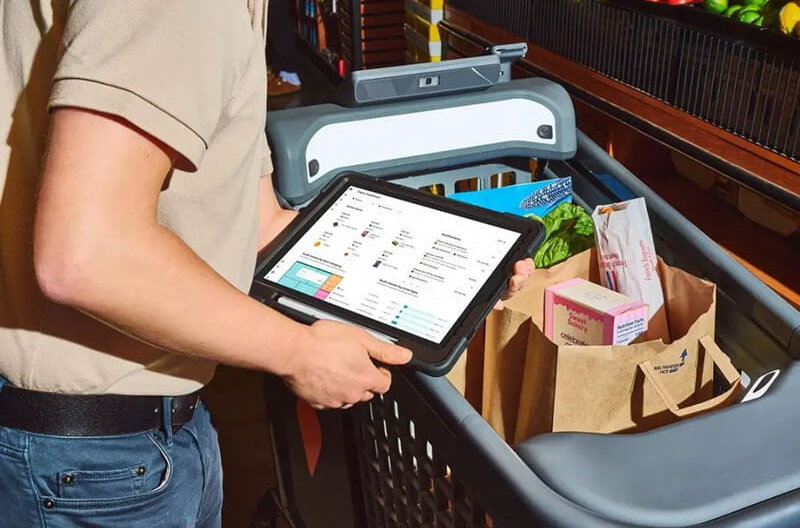One of the most common misconceptions about smart carts is that they only serve as an alternative to self-checkout. But many grocery customers like the ability to keep an eye on their running total, instantly access coupons and loyalty programs, earn discounts and shop independently.
Retailers have been rolling out smart carts in major metro and suburban markets across North America. A recent webinar hosted by the National Grocers Association explored how smart carts can help enhance the shopping experience for customers through gamification, personalization and advertising, and transform shopping from a chore to an adventure.
The discussion was led by Nick Nickitas, founder of Rosie and general manager of local independent grocery at Instacart, with a panel that included Theresa Larsen, director of e-commerce at Inserra Supermarkets, a member of Wakefern Food Corporation operating stores under the ShopRite banner in northern New Jersey; and Bob Rybick, CEO of Geissler’s Supermarkets, which operates seven stores in the greater Hartford, Connecticut, area.
Here are some key takeaways from the discussion:
What are smart carts? These digitally enhanced shopping carts, such as Instacart’s Caper Carts, bring together online and offline shopping to deliver a seamless, frictionless and personalized in-store shopping experience for customers. These AI-powered carts streamline checkout, helps customers navigate the store and lets them bag as they shop. The carts automatically ring up items placed inside and can even weigh produce. Shoppers can complete their experience at the front end or automatically pay for groceries and bypass the register – they’re like rolling self-checkouts.
Smart carts bring advertising into the aisle. By delivering personalized deals to shoppers based on items they’re selecting, they can drive incremental customer spend and attract high-margin advertising revenue through brand partner budgets.
Why should grocers be excited about smart carts? “They solved real pain points for shoppers by reducing friction and enhancing their shopping experience. They’re a direct engagement tool we can leverage to build loyalty,” Larsen said. Rybick added, “It’s a way of easing transactions and capturing dollars. … Once you have that captive audience, the ads can help sell higher-margin items.”
How are grocers measuring success? “Customers are telling us they’re not going down the road to our competition anymore because we have these carts,” Larsen said, noting that basket rings can be as much as 40 percent higher in smart carts.
Smart carts can be a net-neutral investment. Beyond the enhancements of convenience and value to shoppers, ad revenue can pay for the conversion from traditional carts. “That’s the key to adoption at scale,” said Larsen, whose company has smart carts at seven of its 23 stores so far.
Operations are enhanced as well. Store associates “see how the tech makes their operational life easier,” said Rybick, whose stores are in the midst of a total conversion to smart carts. Nickitas noted that the enhanced carts add front-end capacity without enlarging the front end, expediting the checkout experience.
For more exclusive insights about smart carts, view a recording of the complete webinar at https://attendee.gotowebinar.com/recording/5565661231778349400.
[RELATED: Instacart Introduces Ads On AI-Powered Caper Carts]

